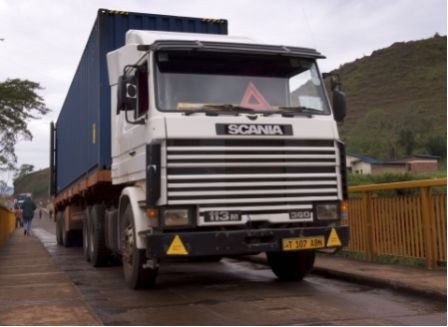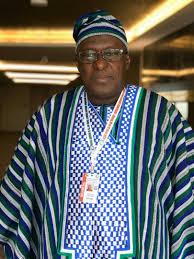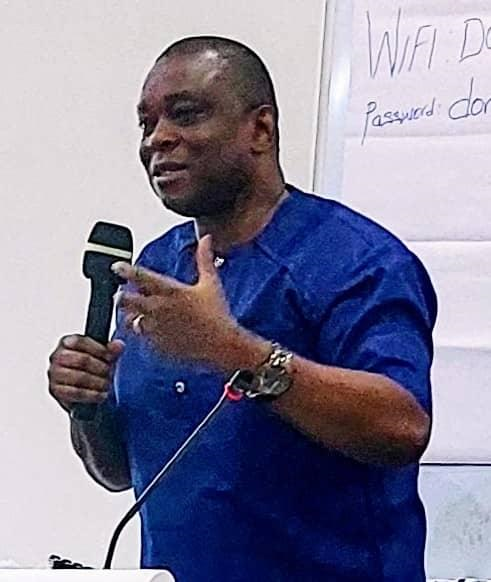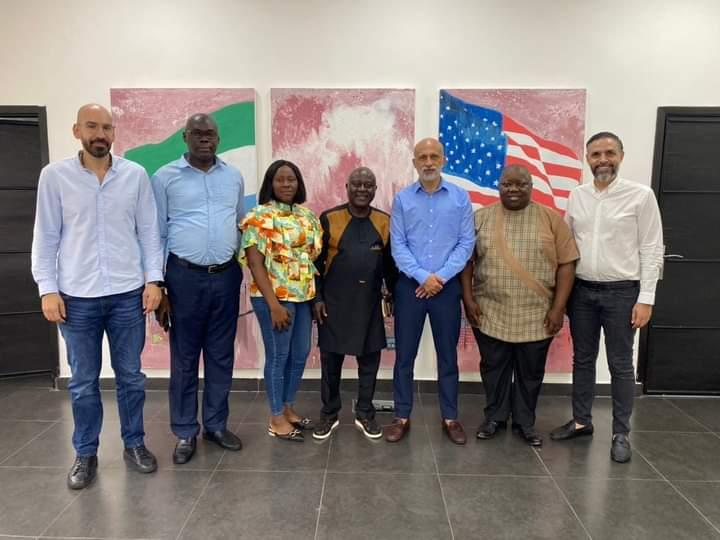Intra-Africa trade: Going beyond political commitments
Among Africa’s policy wonks, under performing trade across the continent within the region is a favoured subject. To unravel the puzzle, they reel off facts and figures at conferences and workshops, pinpoint trade hurdles to overcome and point to the vast opportunities that lie ahead if only African countries could integrate their economies. It’s an interesting debate but with little to show for it until now. (Photo: Reliable road networks are essential to trade. Photo: World Bank/Arne Hoe)
The problem is partly the mismatch between the high political ambitions African leaders hold and the harsh economic realities they face. Case in point: they have set up no less than 14 trading blocs to pursue regional integration. Yet they have shown “a distinct reluctance to empower these institutions, citing loss of sovereignty and policy space as key concerns,” says Trudi Hartzenberg, executive director at the Trade Law Centre (TRALAC) for Southern Africa, an organization that trains people on trade issues. As a result of this reluctance, she says, “Regional institutions remain weak, performing mainly administrative functions.”
Trade flourishes when countries produce what their trading partners are eager to buy. With a few exceptions, this is not yet the case with Africa. It produces what it doesn’t consume and consume what it doesn’t produce. It’s a weakness that often frustrates policy makers; it complicates regional integration and is a primary reason for the low intra-regional trade, which is between 10% and 12% of Africa’s total trade. Comparable figures are 40% in North America and roughly 60% in Western Europe. Over 80% of Africa’s exports are shipped overseas, mainly to the European Union (EU), China and the US. If you throw into the mix complex and often conflicting trade rules, cross-border restrictions and poor transport networks, it’s hardly surprising that the level of intra-Africa trade has barely moved the needle over the past few decades.
Not everybody agrees intra-Africa trade is that low. Some experts argue that a big chunk of the continent’s trade is conducted informally and at times across porous borders. Most borders, they point out, are often poorly managed or informal trade statistics are simply not included in the official flows recorded by customs officials. “We don’t have a way of capturing these types of activities because they’re informal,” said Carlos Lopes, the head of the UN Economic Commission for Africa, in an interview with Africa Renewal. The ECA, he explained, is planning to plug this information gap with a more precise picture of economic activities in Africa and give economic planners a better data set with which to work.
Regional economic blocs
To accelerate regional integration, the World Bank is advising African leaders to expand access to trade finance and reduce behind-the-border trade restrictions such as excessive regulations and weak legal systems. Nevertheless, saddled with weak economies, small domestic markets and 16 landlocked countries, governments believe they can achieve economic integration by starting at the regional level and working their way up, merging all the regional trading blocs into an African Free Trade Area. But with 14 different trading blocs, critics say that’s just too many. Some blocs have overlapping members and many countries belong to multiple blocs.
Yet, the challenge is not simply the number of trading blocs, experts say, but their track record. Governments need to implement their trade agreements. On this score, African countries perform poorly despite their strong political commitment to regional integration, notes Ms. Hartzenberg in her report, Regional Integration in Africa, published by the World Trade Organization, a global body on trade rules.
“In some cases, the challenge is that there may still not be a clear commitment to rules-based governance in African integration; [not] taking obligations that are undertaken in international agreements seriously,” says Hartzenberg in an email responding to questions from Africa Renewal. “Some argue that [African governments] need policy space to address the development challenges they face – but this does appear inconsistent with the signing of many regional agreements.” Lack of capacity to implement their obligations, she adds, is also to blame.
The African Development Bank (AfDB) shares this view. Its analysis of regional integration and intra-trade in Africa imputed slow progress to “a complex architecture of regional economic communities”. While this arrangement has yielded positive steps towards common regional targets, says the bank, “progress has been disappointing.”
Ms. Hartzenberg gave the example of the 15-member Southern African Development Community (SADC), a regional economic group, which launched a Free Trade Area in 2008. Despite SADC’s decision to remove trade restrictions, she says, some countries have not eliminated tariffs as stipulated by the agreement. Worse still, in some cases countries that removed the tariffs have since reinstated them.
To be fair, the SADC Trade Protocol has a provision that allows exemptions from phasing out tariffs. Some countries have applied for such exemptions, the TRALAC executive director said, but others have simply reintroduced the tariffs or alternative instruments such as domestic taxes. “This can be argued to demonstrate a lack of political will to implement agreed obligations. It could well be that some member states recognise belatedly the implications of the agreement they have signed and no longer want to be bound by these obligations.”
Poor infrastructure
Lack of progress in implementing agreement along with the absence of reliable transport, energy and information and technology infrastructure make the journey towards regional integration long and arduous. “Road freight moves incredibly slowly, while major ports are choked for lack of capacity,” observes the AfDB.
Even with the current gains Africa is making in upgrading regional infrastructure, Ibrahim Mayaki, the head of the New Partnership for Africa’s Development (NEPAD), the African Union’s development arm, finds the continent still faces serious infrastructure shortcomings across all sectors, both in terms of access and quality. NEPAD has just completed a 30-year plan that focuses on regional trans-border projects like the 4,500-km highway from Algiers in Algeria to Lagos, Nigeria.
Africa requires huge investments to develop, upgrade and maintain its infrastructure. The AfDB estimates the region would need to spend an additional $40 billion a year on infrastructure to address not only current weaknesses but also to keep pace with economic growth.
Sophisticated protectionism versus EPAs
Many of the trade deals Africa signs with its partners ignore the continent’s efforts to promote intra-Africa trade, according to trade analysts. Nick Dearden, a former director of the Jubilee Debt Campaign and now with World Development Movement, a global advocacy group on poverty, accuses the West of pushing for free trade models that benefit their interests, not Africa’s. He complains that many African countries are “locked into trade agreements which keep them dependent on one or two commodities.”
Writing on his blog hosted by The Guardian, Mr. Dearden says the EU is attempting to foist Economic Partnership Agreements [EPAs] on African countries. EPAs require EU trading partners to lower their tariffs on imports and exports on a reciprocal basis. Mr. Dearden warns that EPAs thwart Africa’s integration efforts and he instead advises African leaders to follow South Korea’s example of using a “range of government interventions” to boost trade. These include, among others, protecting industries, controlling food production and banking, and passing strong regulations to ensure people benefit from trade and investment.
Mr. Lopes of the ECA makes the same point. “Protection is not a bad word,” he asserts. He favours what he calls “sophisticated protectionism” but cautions African leaders to “do it with sophistication, which means you need to strike the right balance.” The ECA boss views sophisticated or smart protectionism not as a choice between state and market as if they “were two opposites.” His argument is that there cannot be industrialization without some form of smart protectionism; and without industrialization, Africa’s efforts to integrate its economies and increase intra-region trade are less likely to succeed. Free trade enthusiasts, however, argue that protectionist policies could shrink the size of the global economy, create few winners and leave everybody worse off.
Beyond commitments
There is much that African countries need to do to increase intra-regional trade. For instance, they need to reduce dependence on commodities by expanding the services sector, including telecommunications, transport, educational and financial. They need to increase investments in infrastructure. And they need to eliminate or significantly reduce non-tariff barriers that are major roadblocks to intra-African trade. The list of non-tariff barriers is as long as it is comprehensive, ranging from prohibitive transaction costs to complex immigration procedures, limited capacity of border officials and costly import and export licensing procedures. For this to happen, it will take much more than political commitments; it will require practical steps on the ground even if they come with some costs.
By Masimba Tafirenyika, courtesy of Africa Renewal
Stay with Sierra Express Media, for your trusted place in news!
© 2014, https:. All rights reserved.






